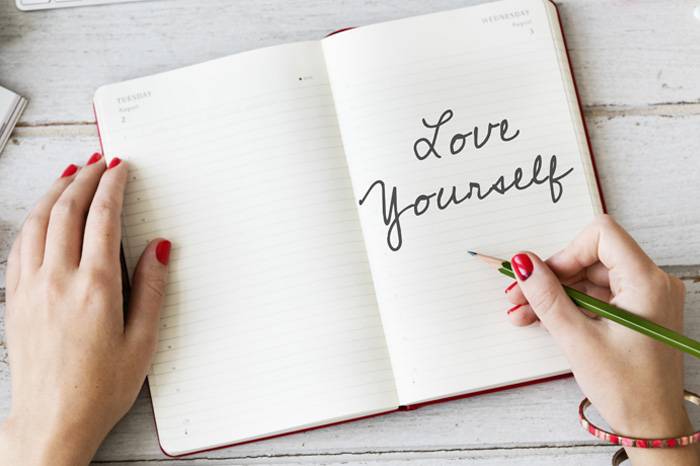Written by: Clinical Psychologist, Dr. Kim Feinstein, Red Mountain Weight Loss® Behavioral Weight Loss Specialist
Body image can be defined as the subjective opinion of your body when you picture yourself in your mind or actually look in the mirror. It involves your feelings regarding your body and includes your height, weight, and shape. Body image also encompasses how you control and sense your body as you move.
If you suffer from Negative Body Image, have you ever wondered what it would feel like to enjoy and accept your body and the way you look instead of continuously loathing and criticizing your physical appearance? What if instead of focusing on your imperfections and flaws, you felt confident with your body and your physical appearance? For many, this may sound like an unrealistic idea but what you may not realize is that body acceptance is entirely within your grasp. The first step to accepting your imperfections, however, is taking the time to realize where your negative body image comes from.
Negative Body Image Is . . .
- A distorted perception of your shape–you perceive parts of your body unlike they really are.
- You are convinced that your body size or shape is a sign of “failure.”
- You feel ashamed, self-conscious and anxious about your body.
- You feel uncomfortable and awkward in your body.
Positive body image is . . .
- A clear, true perception of your shape–you see the various parts of your body as they really are.
- You celebrate and appreciate your natural body shape and you understand that a person’s physical appearance says very little about their character and value as a person.
- You feel proud and accepting of your unique body and refuse to spend an unreasonable amount of time worrying about food, weight and calories.
- You feel comfortable and confident in your body and in your skin!
Quick Reflection….
When you look in the mirror, do you like what you see?
- What are you looking at? (Hair, complexion, clothing, size)
- What am I looking for? (Problems, evidence that I am ____, Proof that I am not ____)
- What am I hoping the mirror will tell me?
Body image is shaped by several means, including historical, social and cultural influences. Historical influences include the forces from your past, whereas social influences are your everyday experiences which determine how you feel, think, and react to your physical appearance. Cultural influences can be defined as a culture’s standards and norms for acceptable body size and shape. You begin to form your perceptions of your body’s physical attractiveness, acceptability, health and functionality in your early childhood as you develop an awareness of your surroundings and culture.
In fact, research suggests that children as young as 3 years of age already begin to learn how their society views physical characteristics. For example, preschool children quickly learn that Barbie® and Ken have the luxury lifestyle with bodies to match, and that the beautiful princesses (with ‘perfect’ bodies) always win the love of the handsome prince. Consequently, children absorb ideas of what is valued as physically attractive and how their physical appearance “should” look. Then, they begin to judge their own bodies to see if it measures up to the “shoulds”. This decision directly influences a child’s feelings of self-worth and body image. Personality traits such as self-criticism and perfectionism may also impact the development of a negative body image.
Quick Reflection….
Historical influences have shaped how you came to view your body in the ways that you do. Think about it, what are some of the messages, rules, and beliefs about your body that you remember hearing from your childhood and family? Do these messages or beliefs currently influence how you feel about your body?
Different cultures have different standards for body size and shape. This can further affect how people perceive their body image throughout their lifetime. For instance, over the years the American culture has grown towards a propagation of an extreme thinness for women and extreme muscularity for men. In contrast, other cultures look at “curviness” border-lining obesity as the ideal for beauty. What each of these standards for beauty fail to recognize are a few important things: (1) Body type is largely based on genetics, and (2) idealized standards of beauty can be impossible to manifest in a healthy manner for some people. Each person has their own, personal “healthy weight range” for their optimal health, which may or may not line up with what is considered “perfect”.
Such historical, cultural and social factors have only become more profound as time has gone on. In fact, eating disorders have increased over 400% since the year 1970. With the rise of mediums such as social media, internet and television, industry has come to have a strong hold on an individual’s belief system of what ‘beauty’ and ‘attractiveness’ entail. Recent experiments have even shown that exposure to magazine photographs of super-thin models produces depression, stress, guilt, shame, insecurity, body-dissatisfaction and increased endorsement of the thin-ideal stereotype. With only 5% of women fitting the current idealized body type and models weighing on-average 23% less than the average woman, it is no surprise that negative body image is so widespread.
Although women and men across the board experience problems with body image, this is not to say that they are condemned to a negative outlook. After self-analyzing and taking notice of where opinions come from and why they are there, it can become easier to reach towards self-love and self-acceptance. By living mindfully, you will be able to develop a higher appreciation for your body. Consider some of these practices on your journey to a positive body image:
- Develop a list of all the things your body allows you to do and read that list daily. Practice counting your body’s blessings, not its blemishes.
- Spend less time in front of mirrors. They only reflect what you believe is true.
- Ask yourself, “Am I benefiting from focusing on what I believe are imperfections in my body shape or weight?”
- Detox from Social Media — Pictures of friends on vacation, “perfect” families and celebrities can trigger us to compare our own bodies, lives and eating patterns to those of others.
To track your progress, keep a journal and take regular notes of your thoughts, feelings and progress.


















